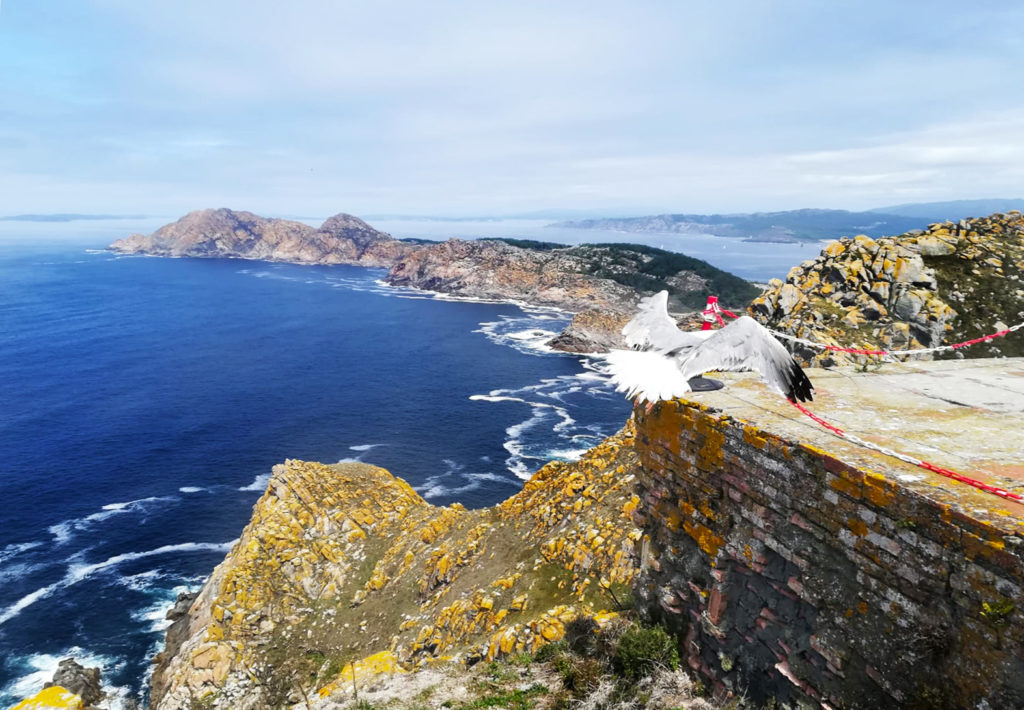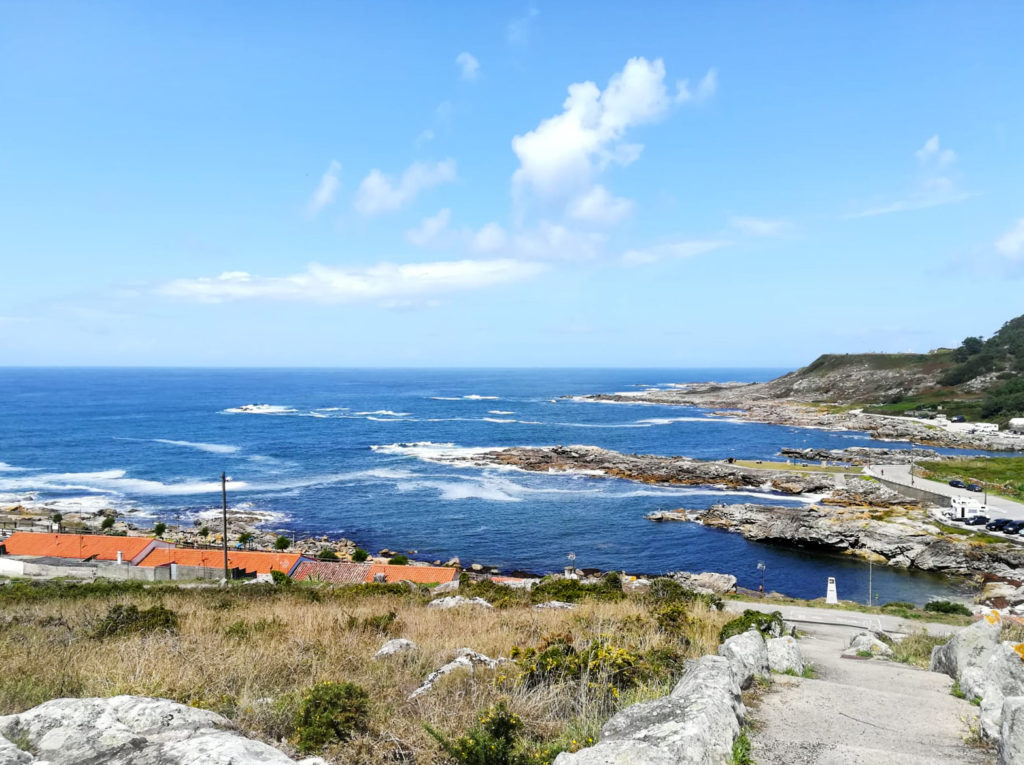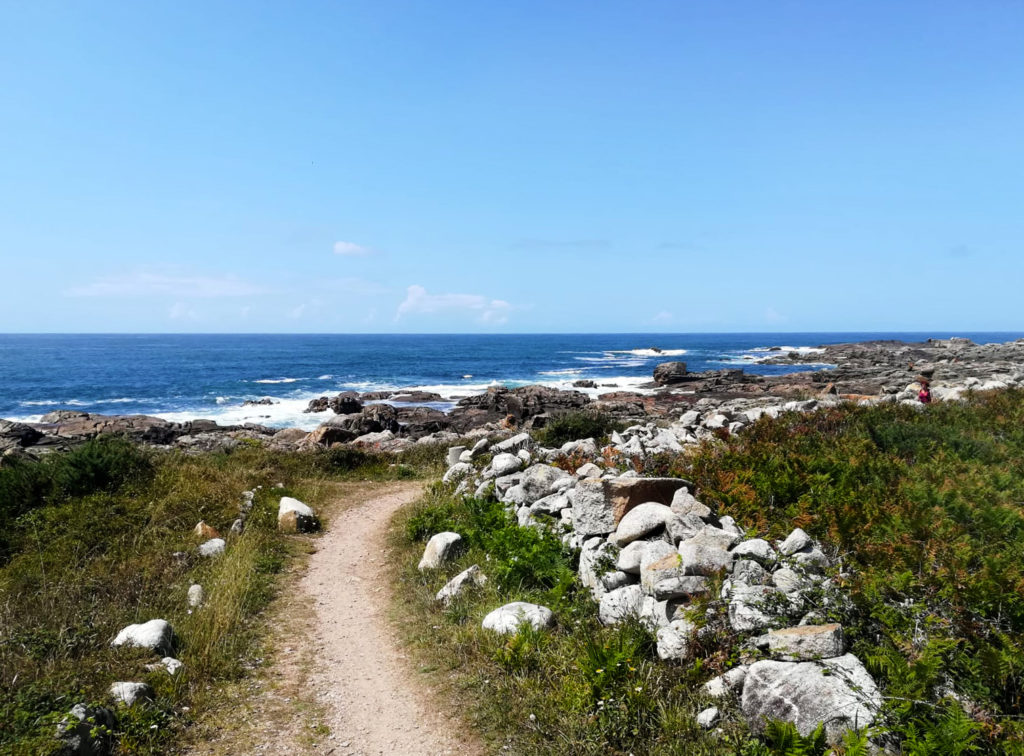Towards Santiago de Compostela: the story of my journey
Our magazine moves around everything that represents the food culture. In this issue, we publish Alice Dini’s travel journal written along the Santiago way. It is a vivid...
Filter by Category
Filter by Author
Our magazine moves around everything that represents the food culture. In this issue, we publish Alice Dini’s travel journal written along the Santiago way. It is a vivid illustration of how food and sitting around the table are always interconnected. It is a story of rediscovering or challenging one’s physical and psychological limits, walking through some of Europe’s most evocative regions. This challenging experience involves around 300,000 people every year. Next is Alice’s journal. She walked the Portuguese section of the route, between Caminha and Santiago, on 11-19 August 2019.
One of the most famous and popular paths today is the Camino de Santiago, which traces the pilgrims’ path to the tomb of St. James the Greater. According to the legend, a boat of angels transported the saint to Galicia. The same angels eventually buried him there.
In 893 Alfonso II the Chaste, King of Asturias, discovered the saint’s remains and ordered the construction of a temple where Benedictine monks settled soon after. From that moment on, pilgrims from all Europe began to arrive in Santiago de Compostela.

The Way of St. James is a very personal journey. However, there are no particular rules to follow. You can start wherever you want and follow the path you prefer. Nevertheless, over the centuries, mainly due to practical questions such as finding board and lodging easily or taking advantage of more frequented and safer roads, pilgrims have begun to follow some particular routes. These have taken on traditional names and pilgrims mainly use them more to go to Santiago. In order of attendance, the most famous routes are the French Way, which starts from Roncesvalles and cuts Spain horizontally. The Portuguese way – with its variants – starts from Lisbon and goes across Portugal. Next is the North route, which crosses the northern part of Spain on the Cantabrian coast from Irún to Ribadeo, entering Galicia. Here it meets with the French Way or the English Way, which starts from the northern ports. Here the pilgrims from northern Europe, from La Coruna or Ferrol meet and descend south towards Santiago.
On the way to Santiago de Compostela, starting from Portugal and continuing along the Galician coast, I was able to observe and experience the life of today’s pilgrims, their habits, their hopes, and their motivations.
The routine is always more or less the same. Early wake up, then breakfast and start walking when it is still dark. Western Spain has the same current time as Italy despite being on-axis with Portugal, which is one hour behind.
Most people stop at the pilgrims’ shelters along the way to eat something and take a break. Here they meet travelling companions encountered in the previous days or new get to know new ones. Stopping to eat is indeed an excellent excuse for a break and sit down. After hours of walk, this is the most yearned thing ever, but it is also an implicit tradition of pilgrims who love to socialize and talk about all the other people on the move.
Along the way, you can find the “áreas de descanso”. These are small areas for pilgrims in areas far from the villages. In those managed by the locals, it is possible to find fruit boxes, available for all with a free offer. On the way to Finisterre, I even happened to meet a woman who opened her home to pilgrims, so that they could use the bathroom, the kitchen and, above all, giving them the chance to rest a little before leaving.

Every day is the same. You walk and stop whenever the stomach needs food and legs need some rest. At lunchtime, the many village restaurants welcome the walkers with the “menu of the pilgrim”, which often includes local dishes such as tortilla, chorizo or sometimes even hot soups such as “sopa de caldo gallego”, a simple meat broth with vegetables cut into large pieces.
Few bold people carry on their shoulders the food they bought the night before or on the same day along the road. They eventually stop in the countryside to recover eating bread, salami and fruit.
After lunch, some decide to keep walking; others stop at their destination, depending on the length of the stage. They spend nights in the “albergues”, structures used just by the pilgrims and shared with other travellers.
In the evening, almost everyone would like a hot meal before finally going to sleep, but the kitchens are not always very well equipped. It is fun to see how the pilgrims manage to prepare themselves dinner with the few tools available.
On the other hand, when you find better-equipped kitchens, you will notice someone prepare complex dishes, such as vegetable soups or pasta dishes.
Today’s pilgrims, like those of the past, come from different countries and cultures, but all share the same goal; namely, reach Santiago de Compostela. Sharing rooms, bathrooms, kitchens and meals in communal spaces help you look around and understand the drive of your travelling companions. In the past, pilgrims left for religious reasons. Today, instead, the reasons that push thousands of people to walk the Camino and backpack for days and days are many.

Some set off in search of something that often remains undefined. Others leave for fitness goals or spiritual or religious reasons. Some people want to test themselves and others who, rather, leave without asking too many questions. Along the way, I saw young people, adults, families, groups, and many loners, people from all over the world. People of all kinds, but so very similar, with the same needs, the same desires, the same tiredness at the end of the day and the same desire to leave the next day”.
Alice Dini
Florentine culinary tradition is…homemade Nicoletta Arbusti Thomas Harris writes in his celebrated book Hannibal, Chapter 27: In Piazza Santo Spirito, near the fountain....
Luca Galantini e Marco Maldera Which are and what do raw materials describe when we consider food as a subject matter? What are their roles in the international context? ...